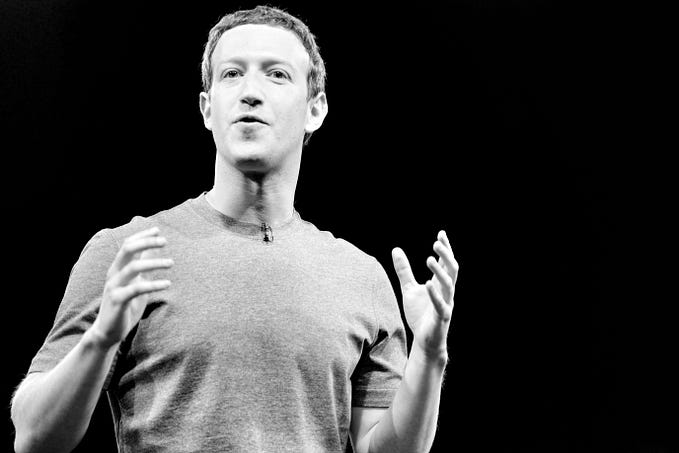Healthcare Chatbots — Types, Taxonomy, and Efficacy for Personalized Care

With the advent of technology, particularly the recent developments in artificial intelligence (AI), machine learning (ML), and annotation services, digital healthcare has gradually evolved to help healthcare seekers monitor and maintain their general well-being more effectively. An important factor driving this paradigm shift is the emergence of chatbots as an efficient and economically viable means of delivering personalized healthcare services.
A key advantage of AI-enabled conversational applications — more precisely known as chatbots — is their ease of use and accessibility — the conversation metaphor makes them intuitive to use and accessible wherever required, at any time. It is therefore instrumental in inspiring researchers and practitioners to explore the potential of conversational AI for providing personalized services through automation.
In light of the democratization of chatbot development, which has contributed to an increase in the number of healthcare chatbots, it is imperative to examine how these systems address aspects concerning the user experience, adoption, and trust in automation, as well as the delivery of health care. This note attempts to provide some valuable insights into different types of healthcare chatbots, their data & design dynamics, and their efficacy for delivering personalized healthcare.
What Makes Chatbots Work
Accurately performed annotation in machine learning is key to the functioning of a chatbot application — allowing it to intelligently answer users’ questions and queries using conversational AI. More precisely, the use of chatbots is based on algorithms that produce a simulation of a conversation with the user through the use of written, spoken, facial, and/or body expressions and/or writing. In response to the user’s query, the chatbot formulates an accurate response.
Chatbots have changed how healthcare consumers and healthcare professionals interact. Today, most large-scale conversational AI agents (such as Alexa, Siri, or Google Assistant) are designed to train the various components of the system using manually annotated data. Usually, by manually transcribing and annotating data, the precision of the conversational ML models is improved.
Data & Design Taxonomy of Healthcare Chatbots
Healthcare chatbots are logically organized into layers. These layers facilitate chatbots with healthcare decision-making processes. Among the components of the knowledge layer are the domain databases and the user databases. Inputs from this layer feed into the service layer of healthcare provision. The role of a data annotation company becomes even more crucial when it comes to training an artificial intelligence-based chatbot to deliver personalized healthcare via online chat and verbal interaction, as well as via virtual prescription sharing.
The dialog layer extracts user intentions, creates responses by consulting the service layer, and communicates them to the presentation layer that implements a text- or voice-based UI. As the dialog layer determines how to deploy appropriate and effective dialog strategies in chatbots, the knowledge layer determines how users can express their intentions and be understood by the chatbots. Moreover, developing transparent and explainable AI-based chatbot applications is both ethical and practical.
Types of Chatbots
It is possible to use a chatbot to personalize healthcare in a variety of ways, including diagnosing diseases, suggesting preventive measures, and providing patients with the right therapeutic support without having to physically visit the clinic. Taking into account the potential role chatbots can play in promoting personalized healthcare, the following are the three most prevalent types of healthcare chatbots based on their usability:
A Chatbot For Remote Diagnosis
An analysis of the user’s symptoms is performed by the diagnostic chatbot, which makes recommendations based on it. Our analysis of diagnosis chatbots reveals three major types which are prevalent in the healthcare practice:
- Providing Diagnosis Support
It is the archetypes that support a diagnosis rather than performing it, as they facilitate access to health services, such as physician access, or provide online consultations with healthcare professionals. Symptoms and diseases can be identified early by the system, which can help patients choose the right treatment.
- A Symptom Checker for General Health
Users are taken through a series of questions regarding their symptoms to diagnose a condition, and sometimes, a course of action is suggested. These chatbot applications can assist patients in collecting information about symptoms of disease and suggest potential causes.
- Specific Symptom Checker
This archetype helps users confirm whether or not an ailment exists and the severity of it, much like consulting a doctor. A Medical Care Bot can diagnose mental disorders and determine whether users need medical attention, and a Mental Care Bot can assist them in determining whether they need any Psychiatric support.
2. AI Chatbots for Preventative Care
This role involves using chatbots to track and build awareness of a user’s health, and preventing health declines by developing healthy habits. Several types of prevention services are available, which can be grouped into three categories:
- Providing Healthcare Access
It is the role of chatbots of this archetype to provide healthcare services to users rather than to provide goods or services themselves. By reducing the amount of effort and increasing the speed of access. As a result, it can help provide healthcare customer services, link patients with healthcare professionals, discover medical drugs online, and connect patients with healthcare professionals.
- Providing Health Education Online
Education archetypes aim to prevent health conditions by educating users about prevention methods. Such chatbots can provide users with a wealth of health-related information. Such chatbots have been widely used during the recent pandemic of Covid among patients seeking better healthcare and maintaining good health.
- Online Health Coaching
There are chatbots which are designed with the objective to improve general well-being and to encourage a healthy lifestyle in order to prevent health degradation. There are psychological incentives at the core of it that facilitate or maintain desirable behaviors. In addition to their functions as personalized reminders and motivational tools for mental and physical exercise, they can also serve as advisors on healthy sleep, nutrition, and wellness habits.
3. Chatbots for Therapy
In some cases, chatbots can be used for therapy to treat specific health conditions (for example, pregnancies or diets) with therapeutic measures served remotely. Following is a list of archetypes that can be applied to therapy services through chatbot applications:
- Support for Therapy
In this archetype, the patient is aided throughout the treatment process with remote assistance. As an example, reminders can be sent to make sure you take your medication (e.g., Florence), or medicines can be listed online based on how they’re reviewed (e.g., HealthRobot).
- Health Therapy
Therapists provide at-home therapy to patients as part of the therapist archetype. Drug-based therapies or practice-based therapies are offered to their patients based on their primary target. Each sub-archetype focuses on a different aspect of treatment (such as Florence) and discusses practical methods for ensuring success of the treatment.
- Therapy based on Cognitive Behavior
The archetype provides therapies targeted at specific emotional and mental states. In this form of therapy, the patient is guided through a structured, guided dialogue that begins with a series of questions and answers to identify the patient’s condition. On the basis of the estimated conditions, specific exercises are recommended and the target state is tracked.
Personalizing Healthcare with Chatbots
It is more efficient to deliver personalized healthcare using chatbots since they enable providers to interact with multiple patients in multiple languages simultaneously. An AI system uses artificial intelligence to understand natural language, create natural-like conversations, and make appropriate recommendations according to the utterances and mental states of users.
Intelligent chatbots understand questions no matter how they are phrased through a continuous learning process before they can correctly analyze and respond to them. Chatbots can be the best way to stay connected with customers and support them with anything they need, with the help of a bot creator.
In terms of supporting healthcare seekers and providers, a chatbot can provide the following benefits:
Patients can be served more effectively by such tools because they provide convenient communication channels.
The bot will help patients receive treatment faster since it connects them directly to experts.
Clinicians can focus on what matters most by using chatbots to automate clinical processes.
It is likely that patients will feel better about their situation when they feel heard and understood.
With chatbots, patients can avoid issues like waiting on hold for a long time or scheduling unnecessary appointments during normal business hours. The availability of medical assistance 24 hours a day, 7 days a week ensures that patients are always able to obtain immediate assistance in the hour of need, at any time and anywhere.










